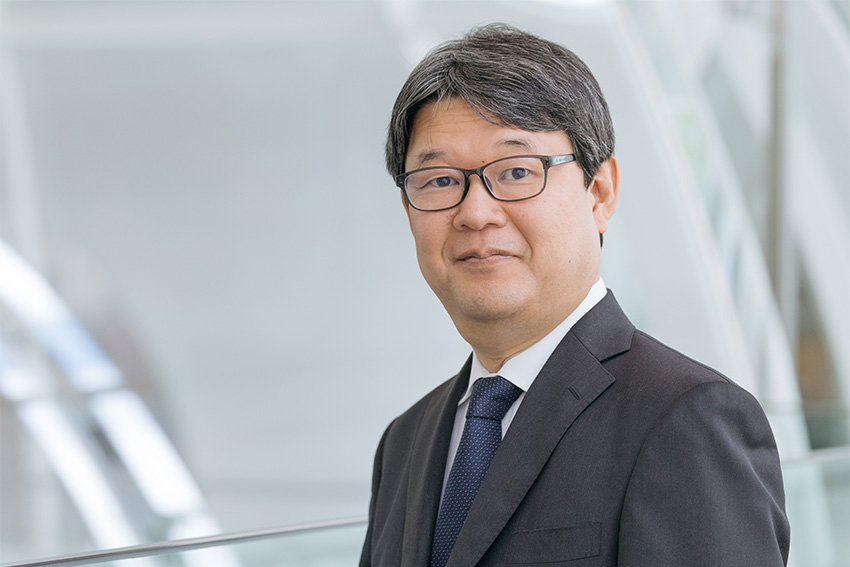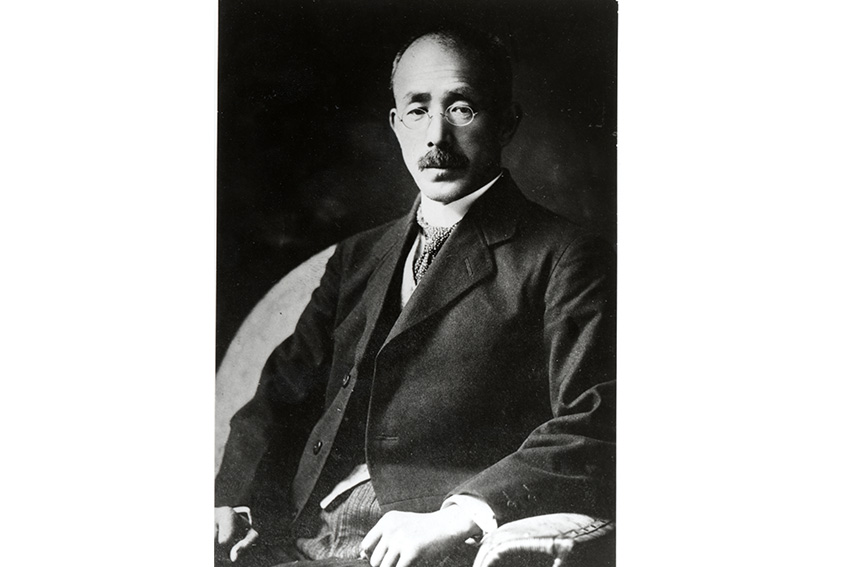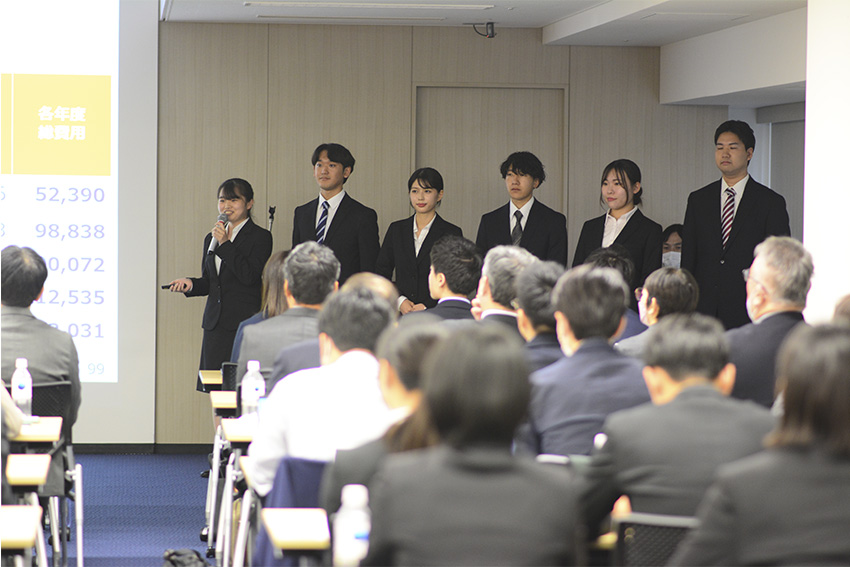Seikei University is living up to its name's meaning, creating a path for its students to become leaders and pioneers of the future.

In addition to a relatively low number of international workers compared to other countries, Japan is facing a significant demographic shift characterized by both an aging and a declining population. This is expected to result in a labor shortage of about eleven million people by the year 2040. To combat this, the country would like universities to reach 400,000 international university students by the year 2033. What role can Japanese universities play in addressing Japan’s challenges, including the need to globalize and the shortage of labor?
The role of the university in tackling the ongoing issue of population decline is to act as the attraction point to overseas students and to provide comprehensive education and training. Some students would remain in Japan and join the workforce and continue working in Japan, and some would go back to their own country and act as a bridge between Japan and their country in terms of business or human relationships. As for Seikei University, we are planning to establish a new faculty; the faculty of Global Studies and Sustainability. Its core mission would be to provide both Japanese cultural and environmental sustainability education. Broadcasting, or marketing, the charm of Japanese culture and solutions to environmental challenges is crucial in attracting foreign students who are interested in pursuing studies in Japan. This new department could play a pivotal role in drawing these international students to our shores.
The foundation of our university is a deep connection with the Mitsubishi conglomerate group. A benefit of this good relationship with Mitsubishi is that we can have our students visit their group companies for training and internships, so foreign students who are interested in international business can get hands-on experience in Japan.
Japan ranks low in international rankings, but these rankings don’t capture the whole story. How do you account for these low rankings, and what do you think these rankings get wrong about universities here in Japan?
One of the biggest reasons Japanese universities rank low despite their substantial strengths is that there is already an eminent market in Japan for academia, so researchers do not need to target or showcase their research to overseas academic audiences. Rather, they can stay within the Japanese academic circle since it’s self-sustaining. That is both a positive and a negative thing. The positive thing is that Japan has an advanced academic society, but the negative thing is that there’s a disconnect from the global mindset. Having said that, with the population decline, there are fewer students and a shrinking academia, so it’s important that Japanese universities look more towards overseas and shift their mindset to global academics.
In the past, academic papers were written for Japanese academic magazines, and that was often sufficient, but with globalization and with the shrinking of Japanese academia, it’s important that researchers, professors, and students look overseas and actively publish these papers to international academic magazines and outlets.
Speaking of looking overseas, for students interested in study or internship opportunities abroad, the Institute for International Studies offers advice and guidance on multiple opportunities. Students can take part in long-, medium-, and short-term exchanges to learn language or specialized subjects. Your university also has an agreement with the Japan Study Abroad Foundation (JSAF), which opens opportunities for study at over 130 overseas institutions. What do you think are the benefits that your students can gain from studying abroad, and what do you think international students can gain from studying here at Seikei University? Can you also speak to the benefits of the university's location?
There are two big advantages to studying abroad for Seikei University students. The first is the improvement of their English ability. The second is that Japan is an island nation, so it tends to be isolated. Therefore, it’s important to have a view from outsiders and to evaluate your own culture from outside the country.
The biggest attraction of studying at Seikei University is its location in Kichijoji, Tokyo. Kichijoji is both historic and new, and it accommodates both younger generations and older ones, so it’s a very dynamic place. The university has a long tradition, but compared to other universities, the size is small, so overseas students can immerse themselves and gain a more intimate understanding of the Japanese culture and the mindset of the Japanese people. We also have many Japanese language learning programs.
Seikei University was officially established in 1949 with the founding of the Faculty of Political Science and Economics. However, your origins date back even further, beginning in 1906, when Haruji Nakamura opened a student cram school. That was followed by the establishment of a vocational school in Ikebukuro in 1912. Today, the university offers five faculties, including Faculty of Law, and four graduate schools, such as the Graduate School of Economics and Business Administration. How has your university evolved over time, and what are some of your core values as a higher education institution?
We retain the founder’s spirit of nurturing the individuality of each student and creating a mutual respect for each other. We can achieve that thanks to our smaller size and the more personalized education that we provide, providing a tight circle through our educational system. We have been providing a high-class education throughout our history, tracing back to the older days as well. Our library is also unique and reflects how we value academia.

Haruji Nakamura

Library
As the world becomes increasingly globalized, there’s a strong demand for people who can play an active role internationally, especially people with a global mindset who can lead the internationalization of various companies and organizations. With this focus, your Education for Academic and Global Learners in English (EAGLE) program provides an interdisciplinary education that integrates English language learning with a global outlook, offering students opportunities for internships and personal development. What are the main benefits of the EAGLE program for students looking to get experience for their future international global careers?
EAGLE will actually be discontinued when the students enter at the start of 2026 academic year. It will transition to the new Faculty of Global studies and Sustainability. The important element of the EAGLE program and the new faculty is that we provide many of the classes in English, so students can become familiar with learning the curriculum in English and so they will be more comfortable and less hesitant when they go abroad to study, and they will have a more global-minded outlook.
Another unique aspect of EAGLE and the new faculty replacing it is that many of the faculties have a business background. They are not solely from academia, so they have had hands-on experience. The faculty also has diverse backgrounds, including a musician, those who are carrying out cultural exchange programs, and those with international company experience. Therefore, it’s more of a partnership between academia and the business world that we are trying to create, and the goal is to provide the students with a hands-on social experience and understanding of potential careers.
In 2023, you achieved an impressive employment rate of over 97%, with nearly half of your graduates coming from the Faculty of Law and the Faculty of Humanities combined. Regardless of their faculty, many of your graduates are pursuing careers in popular sectors such as IT and the service industry. Why is your employment rate so high, and how do you prepare students for a wide range of important roles in society after graduation?
We place a strong emphasis on career education and support, starting from the first year. Our university also has a close relationship with the alumni, so the younger alumni have an active engagement with the students while the senior generation alumni provide interview training opportunities. We have multiple training programs, including the Marunouchi Business Training (MBT) program and the Mitsubishi Overseas Business Training (MOBT) program.
The MBT was launched in 2013 for third-year undergraduate students and first- year graduate students. It is a program designed to collaborate between industry and academia. Some businesses you partner with, as mentioned, include Mitsubishi Electric and Mitsubishi Estate Real Estate Service. What role do memorandums of understanding (MOU) play in your business model, specifically regarding industry-academia collaborations, and are you currently looking for any new business partnerships?
We want to create new industry and academic relationships so we can allow the students to experience the front line of technology. For example, it’s very important that the students in the engineering and science department—as well as students from liberal arts programs—experience the latest IT technology, and providing these opportunities can only be had through these collaborations. We also want to strengthen our relationship with Mitsubishi. The MOBT allows students to see how international business is conducted onsite, so that’s a great way to gain new knowledge and experience.

Are there any countries you would like to build business partnerships with?
We have had extensive exchange programs with many countries in Europe, North America, East Asia, and Oceania. Currently, we are focusing on Southeast Asia. Directing our attention to this region is very important for both Japan and for the students to expand their perspective. For example, in the Mitsubishi Overseas Business Training program, students have been trained in Kuala Lumpur with the Mitsubishi Corporation and with Mitsubishi Motors Corporation students have visited the factory in Thailand. We also had training in Thailand at the Kinokuniya Company. We are also working with Taisho Pharmaceutical in other Southeast Asian countries. Our goal is to be able to expand the number of countries and the training content. Likewise, we hope more Southeast Asian students will come to study with us.
You place a strong emphasis on global education, nurturing an international mindset through partnerships with prestigious institutions worldwide, including the University of Memphis in the United States, Edinburgh University in the United Kingdom, and Peking University in China. What countries would you like to expand your university partnerships with, and what do you have to offer in return?
We try to diversify the network of partners. For example, Edinburgh University is very well known in Japan, but we also have partnerships with institutions such as the university of Iceland in Iceland and the university of Bergen in Norway, which have had little interaction with Japanese universities so far. We provide opportunities for students in the respective universities to study at Seikei University, and the education we can provide is more of an intimate, small class learning experience.
Do you have a percentage or ratio of overseas students that you would like to target?
With the new department that will be established, 10% is the target that we have for the number of foreign students, but we don’t have a target for other departments yet. Once we achieve 10% for the new department, we will expand to other faculties.
The decline in population in Japan is affecting rural areas significantly. Ryutsu Keizai University actually provides a comprehensive education, including elementary, high school, and university programs, because lower-level schools are closing down in Japan, and there are not enough of them. We’re also seeing at the government and industry levels that there’s a huge need for foreign labor to come work in Japan because there are not enough Japanese workers. Of course, internationalization is important. That’s the way forward. On the other hand, Japan has 35 million inbound tourists. People have never been more curious about Japanese culture and language, and it caught my attention that you’re talking about global Japanese studies. Can you explain to us that concept? How do you retain that Japanese identity, and what is its relevance in such an internationalized world?
Japan has a long cultural history, and it’s not the cool Japan that’s recently been in the spotlight via anime or manga. It’s also the traditional three elements of food, clothes, and the living environment that have accumulated throughout the years, so together with technology and content, Japanese culture and society have been in focus.
The Global Japanese Studies program aims to export the charm of Japan by providing training and a learning experience about Japanese culture. Of course, that includes art, anime, and manga, but another element that we focus on is regional studies and regional revitalization. Since the population is declining, in order to sustain the regional areas, it’s important not only to have foreign tourists but also to provide new global perspectives from overseas to find the best ways to revitalize the area. The goal is to bridge Japan and other countries while elevating the Japanese regions.
This connects with another department within the new faculty, which is about environmentally sustainable science. It examines how to preserve Japanese natural resources and the environment, which is very important. That has a strong link to the Global Japanese Studies program and regional revitalization.
Please imagine that we will come back on the last day of your term as president, whenever that may be. Do you have a personal ambition or goal that you would like to achieve by then?
On that last day, I would be excited to share with you the progress we have made with this new faculty and how this new faculty has created a synergy in revitalizing other departments. I would also be happy to report that we have more international students and are recognized as a global university. That’s the vision that I have for the university.
For more information, visit their website at: https://www.seikei.ac.jp/university/eng/
0 COMMENTS